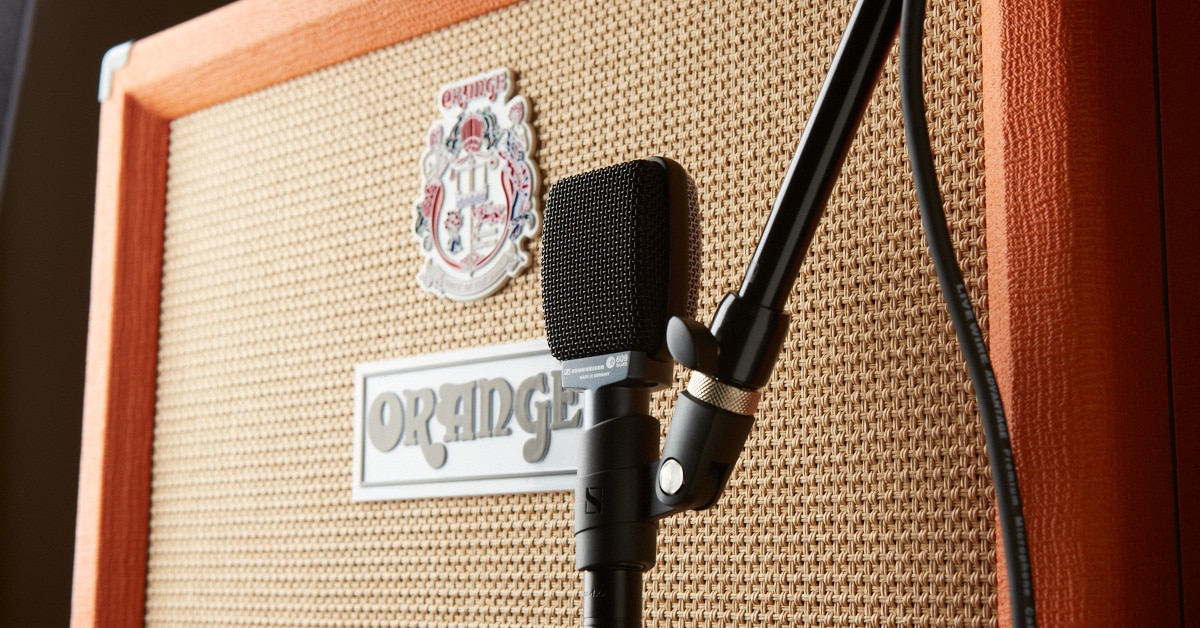Although audio engineers have been recording electric guitars for many decades now, there are no strict rules when it comes to exactly how it should be done. That said, there are several techniques that turn up regularly in recording studios. Each will yield a different sound, so find the one that's appropriate for your music.
These tried and true techniques make good starting points, but experimentation is called for. Moving a mic slightly can often result in a significant change in the way it “hears” the amp. The key is to listen critically to how mic placement is impacting the sound reaching your recording rig or DAW.
Tip #1: Place a dynamic mic pointed at the center of the amp's speaker cone, up against the grille cloth. If the cab has more than one speaker, find the speaker that sounds the best and point the mic at it. This placement is good for a driving, punchy sound. Some engineers prefer pointing the microphone about a third of the way toward the rim of the speaker. Again, experiment to find what works for your situation,
Tip #2: Point the mic at or near the center of the speaker cone, a short distance away. This results in some of the room’s ambience being mixed in with the amp tone. Experiment with various distances; try placements between ten inches and two feet. If you're using a cardioid mic, moving the mic away from the cab will decrease the bass response.
Tip #3: Place a condenser mic at about a 45 degree angle from the front of the speaker cabinet, about 8 to 12 inches away. Set the mic to a cardioid pattern. Usually the mic is placed directly in front of the speaker, but it can be higher. This placement is good for clean guitars when you want lots of highs and mids.
Tip #4: Try miking at various distances from the amp, from three feet to the length of the room. Large diaphragm condenser mics are good for this, because they pick up more low end. If your condenser can switch to omni-directional, and if you're recording in a rectangular or square room, place the amp one or two feet from a wall, and put the mic in the center of the room. As you'd expect, you'll get a lot of room ambience this way. You might also pick up some sounds from the environment, such as cars and yapping dogs.
Tip #5: If you have two mics and an open-back amp, try miking both the front and back of the amp. You can either use two dynamics, two condensers, or one dynamic and one condenser. If you use a condenser, set it to cardioid. Try positioning each mic about eight inches from the cabinet. Place one of the mics slightly to the left, and the other slightly to the right. Experiment until you get a sound you like.
Tip #6: Another two-mic technique: place a dynamic mic close to the speaker to pick up the dry guitar sound. To add room ambience, place a condenser (with a cardioid pattern) about ten feet from the front of the amp and about six feet high, pointed toward the middle of the speaker cabinet.
Tip #7: If the cab has two speakers, use a dynamic mic on one speaker and a condenser mic (set to cardioid) on the other. A large diaphragm dynamic is best, because it can pick up more bass than a small diaphragm dynamic. The condenser is for the highs. Place each mic as close to each speaker as possible, in order to get a dry sound which emphasizes the differences between highs and lows. However, you could wind up with phase cancellation; if the volume is quieter when both channels are panned center, reverse the phase of one of the mics. Often, when two mics are used, one is panned hard left, the other hard right.
Tip #8: Try recording the amp in different rooms/environments. A room with hard, reflective surfaces will have a longer reverb time than one that’s carpeted and full of upholstered furniture. Again, there are no rules. One of our techs likes to place the guitar amp face down on the floor in a concrete laundry room, hanging the mic above the back of the amp near the ceiling. Have fun, and keep experimenting.
Musician's Friend carries a huge assortment of recording microphones. Here are some additional models to consider that get high marks for use in guitar-recording applications:
Dynamic mics: Shure SM57 and SM58, Sennheiser e609, Audix i5, Sennheiser MD421 II, Electro-Voice RE20
Condenser mics: Rode NT1, MXL 990, Audio-Technica AT2020, CAD Equitek E100S
Ribbon mics: Royer R-121, MXL R40







































































































































